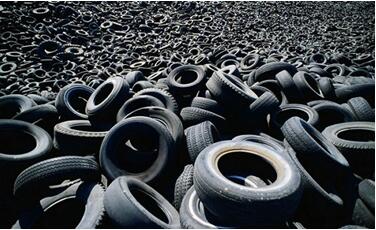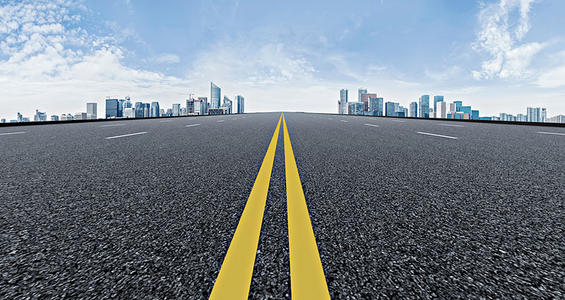
Products
Contact Us
Service Tel:+86-371-53762053
Tel/whatsapp/wechat:+86-13674998188 (24 hours online)
E-mail: zhengzhouyuxi@yuximachine.com
Add:Economic And Technological Development Zone, Zhengzhou, Henan, China (Mainland)
Tel/whatsapp/wechat:+86-13674998188 (24 hours online)
E-mail: zhengzhouyuxi@yuximachine.com
Add:Economic And Technological Development Zone, Zhengzhou, Henan, China (Mainland)
Skype:
yuxi.zhengzhou
Waste tires turned into rubber asphalt, paving the way for environmental protection
Waste tires, as solid waste, are piled up in the open to affect the environment and are called "black pollution". The accumulation of a large number of discarded tires not only seriously affects the living environment of human beings, but also occupies a lot of land resources. It is very easy to breed mosquito-borne diseases, seriously deteriorate the natural environment and may cause fires.

According to relevant data, there are currently 1.5 billion tires scrapped each year worldwide, and an average of more than 4 million tires are scrapped every day. Where do so many used tires end up flowing?
The rubber of the tire has the characteristics of wear resistance, aging resistance, waterproof, and shock absorption. The waste tires are cut into pieces and mixed with asphalt concrete for mixing and paving. This kind of rubber asphalt pavement not only resists aging and rutting but also reduces the noise of cars driving on the pavement by 4 tires.
After research, tires have been worn to varying degrees after passing through asphalt roads for many years. In contrast, a rubber highway made of waste tires has a service life that is almost twice that of traditional highways, and can be 50% quieter than traditional highways! Because rubber is not as easy to expand and contract as hard asphalt, It is not easy to crack at high temperatures, so the service life is longer than asphalt. At the same time, the elasticity of rubber can significantly improve the impact resistance of concrete, can reduce the impact force of vehicles, thereby reducing the possibility of injury and death, and this rubber concrete barrier is not easy to be damaged, and basically does not need to be replaced and repaired.


The manufacture of rubber asphalt is a wonderful process of turning waste tires into treasure: after the waste tires are sheared and shredded, the non-rubber materials such as steel wires in the tires are separated to obtain rubber particles, which are then mixed into the asphalt, To achieve the purpose of improving the quality of asphalt. Because it can effectively solve the environmental problems caused by waste tires, save asphalt resources, improve road performance, and prolong the service life of the pavement, it has been widely recognized in the industry in the field of road engineering and has been maturely applied.
Yuxi tyre recycling machine is mainly composed of tire wire drawing machine, steel wire separator, GX series single shaft (fine) tire shredder, chain conveyor, magnetic separator, and dust reduction system. The first treatment process of waste tires is wire drawing. The steel wire skeleton of the waste tires is extracted by the tire wire drawing machine; the waste tire materials after preliminary wire drawing continue to be fed into the wire separator along the chain conveyor, through the rotation The file on the knife roller and the file on the box have the shearing and squeezing effect on the rubber block, and the rubber block is shredded and sheared to smaller particle size. At the same time, in the process of crushing the rubber block, the steel wire and some fibers and the rubber are screened and separated; the material is then separated by the magnetic separation iron removal system to separate the remaining steel wire; the rubber block passes through the single-axis (fine) crusher, and the movable knife is used The granules interact with the fixed knife, and the material size is controlled by the screen, and the material is shredded, sheared and extruded to smaller particle size.
After processing by Yuxi Tyre shredder machine, waste tires become rubber particles and can be used for modified asphalt, steel wire skeleton, and broken steel wire for recycling. The entire production process uses fully enclosed automated continuous operation, which greatly reduces dust, noise, and other pollution. Its biggest advantage lies in the powerful steel wire separation and crusher, which is driven by hydraulic pressure, with high power and low energy consumption and water consumption. This machine adopts physical normal temperature treatment throughout the process without chemical reaction, which greatly improves the working environment.
Compared with the traditional asphalt pavement, this kind of rubber asphalt pavement has obvious advantages: rubber asphalt has environmental protection and energy saving, strong bearing capacity, and long service life. It can not only effectively slow down the aging and cracking of the pavement, but also prevent the pavement. Blind spots caused by vehicle slippage when wet and reflective. In addition, this "toughness" of rubber asphalt also has a noise reduction effect. After calculation, the vehicle is traveling at a speed of 80 km/h, and the rubber asphalt pavement reduces noise by about 4 decibels compared to the ordinary pavement.
- Contact Us
- Add:Economic And Technological Development Zone, Zhengzhou, Henan, China (Mainland)
- Tel/whatsapp/wechat:+86-13674998188 (24 hours online)
- Fax:+86-371-53762053
- Skype : yuxi.zhengzhou
- E-mail: zhengzhouyuxi@yuximachine.com
- Follow Us
Copyright 2003. Yuxi Machinery Equipment(zhengzhou) Co.,Ltd. ©










